Table of Contents
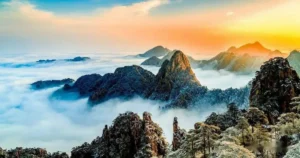
Why Huangshan Should Top Your China Bucket List
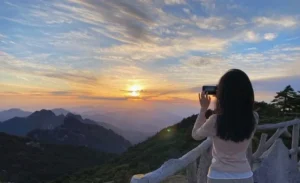
- The bizarre granite peaks that inspired countless traditional Chinese paintings
- The legendary “Sea of Clouds” phenomenon that transforms the mountain into an otherworldly landscape
- Ancient pine trees that cling to impossible rock crevices (some over 1,500 years old!)
- Natural hot springs to soak your aching muscles after a day of hiking
- A chance to experience the mountain that has inspired Chinese culture for millennia
When to Visit Huangshan: Weather Timing is Everything
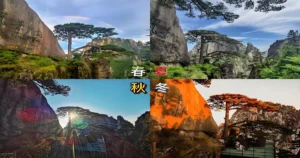
Spring (April- May)
Spring brings vibrant azaleas and other mountain flowers. The weather is generally pleasant, with temperatures ranging from 50-68°F (10-20°C). However, spring also brings more rainfall and potential fog that might obscure those famous views. I met a Dutch couple who spent three days on the mountain and only saw clouds the entire time!Summer (June-August)
Summer is the peak tourist season, with temperatures around 68-80°F (20-27°C). The mountain becomes extremely crowded with domestic tourists, especially during Chinese holidays. My recommendation? Avoid summer unless you enjoy standing in long cable car lines and fighting for photo spots. Trust me, those iconic Instagram shots rarely show the crowds just outside the frame!Fall (September-November)
This is the GOLDEN time to visit Huangshan, China! The weather is stable with clear skies, temperatures around 50-68°F (10-20°C), and the autumn foliage turns the mountain into a palette of red, orange, and gold. When I returned in October, I caught five straight days of perfect “sea of clouds” conditions. Magic!Winter (December-March)
For the adventurous souls! Winter transforms Huangshan into a snow-covered wonderland with temperatures between 23-41°F (-5-5°C). The snow-covered pines and granite peaks create an ethereal landscape straight from a traditional ink painting. Plus, tourist numbers drop dramatically. Just be prepared for potential closures during heavy snow and bring proper winter hiking gear.How to Get to Huangshan: Your Journey Begins
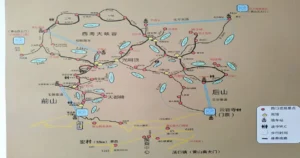
International Flights
There are no direct flights from most international destinations to Huangshan. Your best bet is flying into one of these major hubs:- Shanghai Pudong International Airport (PVG) – About 5 hours from Huangshan by high-speed train
- Hangzhou Xiaoshan International Airport (HGH) – About 3.5 hours from Huangshan by high-speed train
- Beijing Capital International Airport (PEK) – For those planning a broader China tour
Domestic Transportation to Huangshan
From these major cities, you have several options:- High-Speed Train (Recommended): China’s bullet trains are a marvel of efficiency. From Shanghai to Huangshan North Station (黄山北站/Huángshān běi zhàn) takes about 2.5-3.5 hours and costs around 220-280 RMB ($35-45). Trains run throughout the day.
- Flights to Huangshan Tunxi Airport: For those short on time, domestic flights operate from major Chinese cities to Huangshan Tunxi International Airport (TXN). From the airport, it’s still a 1-hour drive to the Huangshan Scenic Area.
- Bus Services: Overnight buses operate from Shanghai, Hangzhou, and other major cities, but they’re not as comfortable as the train option.
Navigating Huangshan: Trails, Cable Cars, and Survival Tips
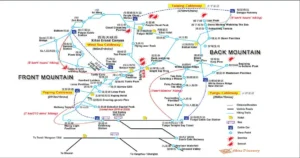
Entrance Gates and Cable Cars
Huangshan has three main entrance gates:- Eastern Steps (Yungu Temple): The most popular entrance with a cable car. The climb is about 7.5 km (4.7 miles) of steps.
- Western Steps (Mercy Light Temple): Steeper but less crowded, also with a cable car. The hike is approximately 15 km (9.3 miles).
- Southern Gate (Jinsha): Least-used entrance with the newest cable car.
Popular Hiking Routes
For the true Huangshan China travel experience, these classic routes offer the best views:- The Eastern Steps Classic Route (1-2 days):
- Day 1: Take the Eastern Steps cable car up, hike to Bright Summit Peak, then to White Goose Ridge for sunset, and stay overnight at Beihai Hotel
- Day 2: Wake up for sunrise at Dawn Pavilion, hike to Flying-Over Rock, descend via Western Steps or cable car
- The Full Huangshan Experience (2-3 days):
- Day 1: Climb the Eastern Steps (3-4 hours), visit Hundred-Step Cloud Ladder, stay at Beihai Hotel area
- Day 2: Sunrise at Lion Peak, hike across the mountain to Western Steps area via Bright Summit Peak and Flying-Over Rock, overnight at Xihai Hotel
- Day 3: Sunrise at Purple Cloud Peak, descend via Western Steps or cable car
Must-See Huangshan Attractions
Don’t miss these iconic spots that make a Huangshan China travel guide complete:- Greeting-Guest Pine: The symbol of Huangshan, featured on the 5 yuan note
- Flying-Over Rock: A massive boulder perched precariously on a cliff edge
- Beginning-to-Believe Peak: Named because visitors start to believe the incredible tales about Huangshan’s beauty
- A Monkey Viewing the Sea: A rock formation resembling a monkey gazing at clouds
- Lion Peak: Perfect for sunrise viewing
- Grand Canyon of Huangshan: Less visited but spectacularly beautiful
Where to Stay: Mountaintop Magic vs. Budget Base
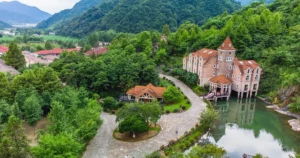
Mountain Hotels
Staying on the mountain is a once-in-a-lifetime experience, allowing you to catch both sunset and sunrise without exhausting yourself. The main mountain hotels are:- Beihai Hotel: The largest and most convenient location
- Shilin Hotel: Close to several viewpoints
- Xihai Hotel: Great for western area exploration
Tangkou and Tunxi (Huangshan City)
For budget travelers, staying in the towns near Huangshan makes more financial sense:- Tangkou Town: The closest settlement to the mountain entrance, with basic hotels (150-300 RMB/$23-45)
- Tunxi (Huangshan City): About 1 hour from the mountain, with more varied accommodation options and the lovely Old Street area for evening exploration (200-600 RMB/$30-90)
What to Pack: Prepare or Perish
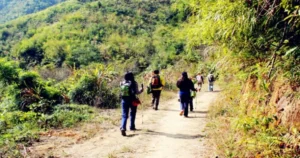
- Proper Hiking Shoes: The stone steps can be slippery, especially in wet weather
- Layers of Clothing: Mountain weather changes rapidly
- Rain Gear: Even in “dry” seasons, mountain mist and rain are common
- Sun Protection: Hats, sunscreen, and sunglasses
- Water and Snacks: Mountain prices are 2-3 times higher than in town
- Cash: Not all mountain facilities accept foreign credit cards
- Power Bank: For emergencies and all those incredible photos you’ll take
- Basic First Aid: Including blister patches (trust me on this one!)
Local Food: Fueling Your Mountain Adventure
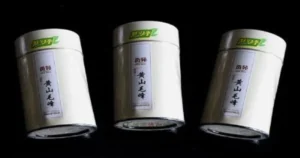
- Huangshan Braised Pork: Melt-in-your-mouth pork belly braised in soy sauce and wine
- Bamboo Shoots: Fresh, tender, and simply prepared
- Hairy Tofu: Don’t let the name deter you; this fermented tofu is crispy outside and soft inside
- Huangshan Mao Feng Tea: One of China’s top ten teas, grown on the mountain itself
- Shideyuan Cake: A local sweet treat perfect for hiking energy
Beyond the Mountain: Extending Your Huangshan Adventure
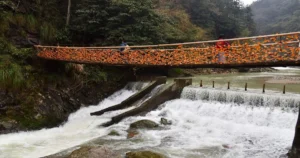
Ancient Villages
The Huizhou ancient villages near Huangshan are UNESCO World Heritage sites featuring remarkably preserved Ming and Qing dynasty architecture:- Hongcun Village: Made famous in the movie “Crouching Tiger, Hidden Dragon,” with stunning water features and moon ponds
- Xidi Village: Known for exquisite wood carvings and ancestral halls
- Bishan Village: Less touristy with a growing arts community
Huizhou Cultural Experiences
- Ink Stone Production: Watch artisans craft these traditional writing implements
- Paper Making: Xuancheng in Anhui province is famous for traditional paper
- Huizhou Cuisine Cooking Classes: Available in Tunxi for food enthusiasts
Nature Beyond the Mountain
- Jiuhua Mountain: One of China’s four sacred Buddhist mountains, just a few hours from Huangshan
- Taiping Lake: China’s largest man-made lake, perfect for a relaxing day after mountain hiking
- Qiyun Mountain: Known as the “mountain of bizarre rocks,” which is less visited than Huangshan
Practical Tips: Making Your Huangshan Trip Smooth
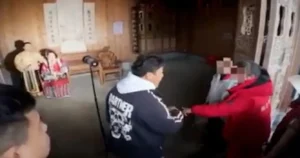
Language Barriers
English is not widely spoken outside major hotels. Prepare by:- Downloading translation apps that work offline (Google Translate with Chinese downloaded)
- Saving key phrases in written Chinese to show locals
- Take screenshots of your hotel address in Chinese characters
- Booking guided tours if you’re concerned about navigating independently
Money Matters
- China is increasingly cashless, but as a foreigner, you might have trouble setting up mobile payments
- Bring sufficient cash for mountain expenses
- Notify your bank of travel plans to avoid card blocks
- Major hotels accept international credit cards, but smaller establishments might not
Internet Access
- China’s Great Firewall blocks many Western apps and websites
- Set up a VPN before arriving in China
- Purchase a local SIM card or rent a pocket WiFi device for convenience
Cultural Considerations
- Chinese tourists often travel in large groups and can be competitive at viewpoints
- Arrive at sunrise spots at least 30 minutes early to secure a good position
- Be prepared for personal space concepts to differ from Western expectations
- Chinese travelers may ask for photos with you if you’re visibly foreign—it’s meant as friendly interest
The Bottom Line: Is Huangshan Worth It?

Have you visited Huangshan, or are you planning a trip? Share your experiences or questions in the comments below! Need more specific information about Huangshan China travel planning? Let me know what else you’d like to learn about this magnificent destination.

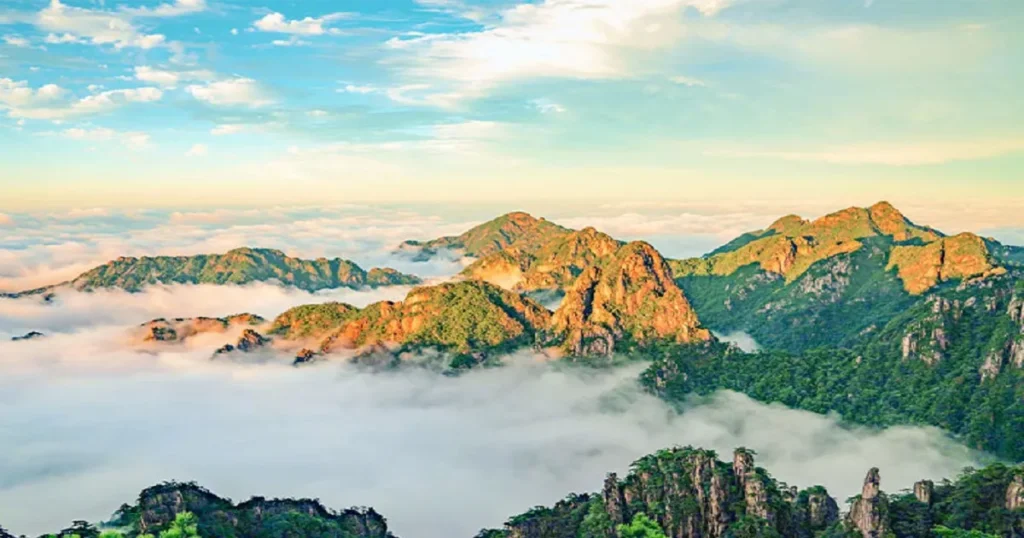


Does your blog have a contact page? I’m having a tough time locating it
but, I’d like to send you an e-mail. I’ve got some creative ideas for your blog you might be interested in hearing.
Either way, great website and I look forward to seeing it grow
over time.
What’s the idea? What’s the website?